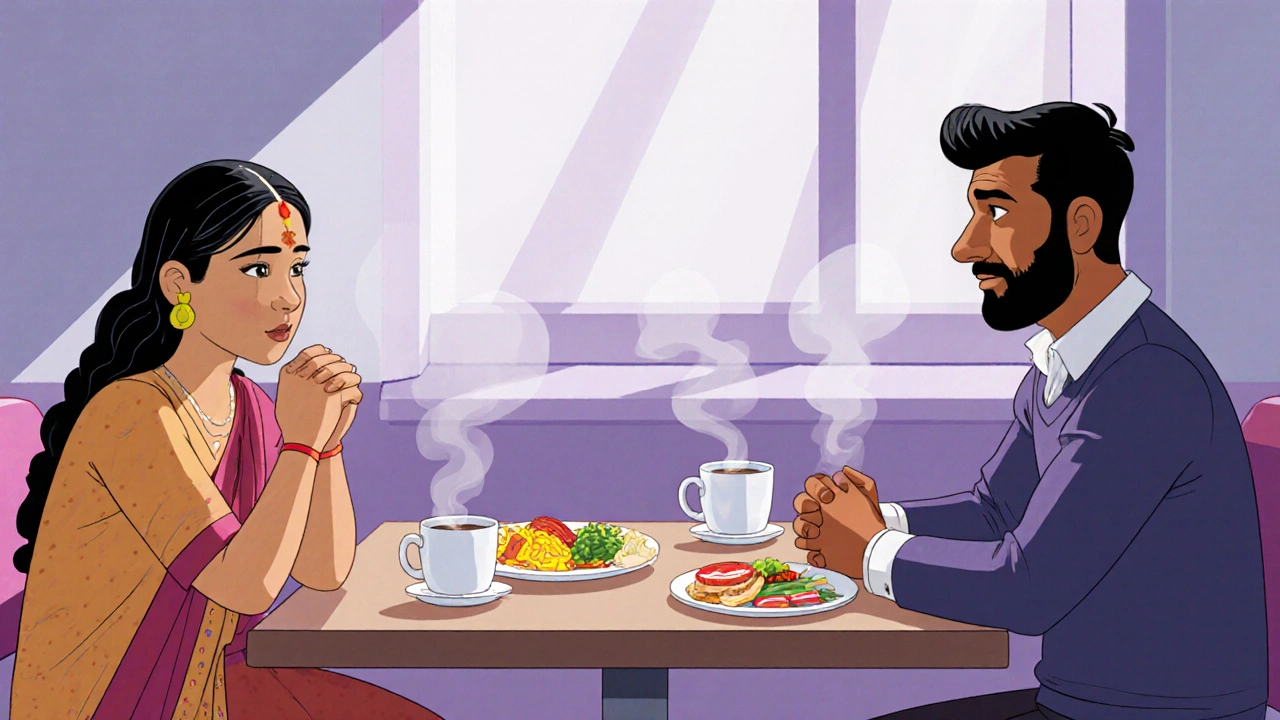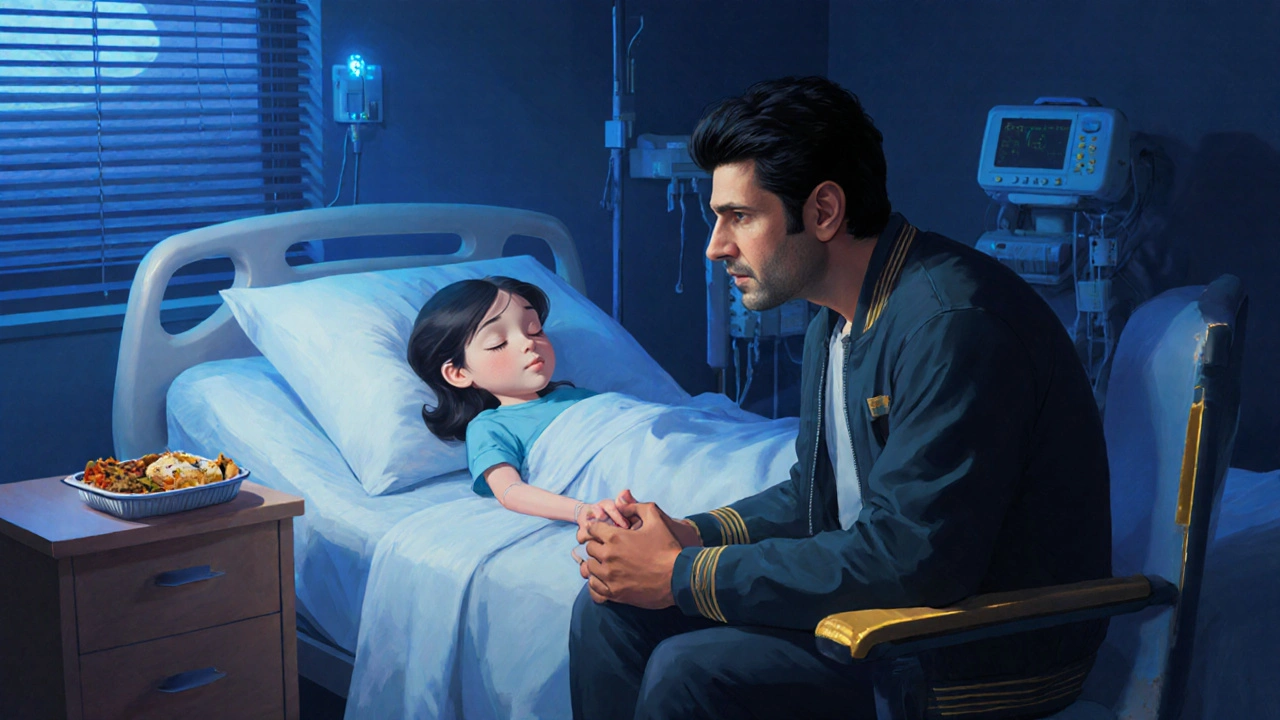The Big Sick isn’t just another romantic comedy. It’s a real story wrapped in laughter, fear, and the quiet chaos of two people trying to love each other while the world pulls them in opposite directions. Released in 2017, it didn’t come with flashy special effects or a billion-dollar budget. But it hit harder than most blockbusters because it didn’t pretend love was simple. It showed how love gets tangled in family, faith, immigration, and the terrifying silence of a hospital room.
Love That Doesn’t Fit the Template
Most romantic comedies follow a script: meet cute, misunderstandings, grand gesture, happy ending. The Big Sick flips that. Kumail Nanjiani plays a version of himself - a Pakistani-American stand-up comedian trying to make it in Chicago while his parents push him toward an arranged marriage. He meets Emily, a white grad student, and they connect over bad jokes and late-night diner runs. It’s real. It’s messy. And it’s not supposed to last.
But then Emily gets sick. Not just sick - critically ill, comatose, on a ventilator. And suddenly, the romantic comedy becomes something else: a story about responsibility, guilt, and the kind of love that shows up when you least expect it.
Kumail doesn’t just fall for Emily. He’s forced to face his family’s disapproval, his own fear of failure, and the weight of cultural expectations. His parents, devout Muslims from Pakistan, believe he should marry a Pakistani woman. They don’t understand why he’s so attached to someone who doesn’t share their language, food, or religion. Emily’s parents, meanwhile, are thrown into a world they don’t control - a hospital, a stranger who’s suddenly family, and a daughter who can’t speak for herself.
Real People, Real Pain
The movie doesn’t sugarcoat anything. There’s no magical cure. No last-minute speech that fixes everything. Emily’s illness isn’t a plot device - it’s the engine. And it forces everyone to drop their masks. Kumail’s parents, who spent the whole movie rejecting Emily, sit by her bedside. Her mom, Beth (played by Holly Hunter), breaks down crying in the middle of a grocery store because she’s tired of pretending she’s okay. Her dad, Terry (Ray Romano), starts bonding with Kumail over bad coffee and awkward silences. And Kumail? He stops running. He stops hiding. He finally says what he’s been too scared to say: “I love her.”
These aren’t movie characters. They’re people. And that’s why it works. The script was written by Kumail Nanjiani and his real-life wife, Emily V. Gordon. Every awkward pause, every angry argument, every moment of silence - it came from their lives. When Emily was hospitalized in 2006, Kumail didn’t know what to do. He didn’t have a script. He just showed up. And that’s what the movie captures: the raw, unpolished truth of love under pressure.
Family Isn’t Just Blood - It’s Choice
One of the movie’s quietest moments happens in the hospital cafeteria. Kumail’s mom, Sharmeen, brings him homemade food. She doesn’t say much. But she sits down. And for the first time, she doesn’t talk about arranged marriages or Pakistani traditions. She just watches him eat. That’s when you realize: she’s not rejecting Emily. She’s scared of losing her son. She’s scared of being left behind.
That’s the heart of the cultural conflict. It’s not about religion or race. It’s about belonging. Kumail’s parents came to America to give him a better life. But they didn’t expect him to become someone who didn’t fit their vision of success. Emily’s parents, raised in a different culture, don’t understand why Kumail didn’t leave earlier. But they don’t push him out. They let him stay. And that’s the real breakthrough: love isn’t about changing who you are. It’s about letting someone else into your world - even if it’s messy.

Stand-Up as Survival
Kumail’s stand-up comedy isn’t just background noise. It’s his way of coping. He jokes about his parents, about dating white women, about being the “brown guy” in a room full of white people. The jokes are sharp, self-deprecating, and painfully honest. But they’re also armor. When he’s onstage, he controls the narrative. When he’s in the hospital, he doesn’t.
There’s a scene where he performs a set about Emily’s illness. The audience laughs - not because it’s funny, but because they’re uncomfortable. And he stops. He walks off stage. That’s the moment he realizes: he can’t laugh his way out of this. He has to feel it. And that’s when he starts to grow.
Why This Movie Still Matters
It’s 2025. We’ve seen dozens of rom-coms since The Big Sick came out. Most of them forget one thing: love doesn’t happen in a vacuum. It happens in kitchens, hospitals, airports, and living rooms where people argue about who’s doing the dishes. This movie didn’t just tell a love story. It told a story about identity - what it means to be caught between two worlds, and how love can be the bridge.
It’s not just for millennials. It’s for anyone who’s ever felt like they don’t belong. For parents who worry their kids are changing too fast. For partners who don’t know how to say “I’m scared.” For people who love someone who doesn’t look like them, eat like them, or pray like them - and still choose them anyway.
There’s no grand finale. No wedding. No dramatic declaration. Just Kumail sitting next to Emily’s hospital bed, holding her hand. She’s awake. She’s alive. And they’re both exhausted. But they’re together. And that’s enough.

What Makes It Different From Other Rom-Coms
Most romantic comedies treat conflict like a speed bump. A misunderstanding, a missed call, a jealous ex - solved by the third act. The Big Sick treats conflict like a wall. You can’t climb it. You can’t jump over it. You have to walk through it. And that’s what makes it unforgettable.
Here’s how it stacks up:
| Element | Typical Rom-Com | The Big Sick |
|---|---|---|
| Conflict Source | Miscommunication, jealousy, exes | Cultural expectations, illness, family pressure |
| Resolution | Grand public gesture | Quiet, honest conversation |
| Family Role | Comic relief or obstacle | Complex, evolving, emotionally real |
| Ending | Wedding or kiss | Reconnection after trauma |
| Authenticity | Scripted tropes | Based on real events, written by the couple |
There’s no villain here. No evil parent. No manipulative ex. Just people trying to do the right thing - even when they don’t know what that is.
Why You Should Watch It (Again)
If you’ve seen it once, watch it again. Not for the jokes. Not for the romance. Watch it for the silence. Watch it for the way Kumail’s mom folds her hands when she’s nervous. Watch it for the way Emily’s dad says, “I don’t know how to do this,” and doesn’t pretend he does. Watch it for the moment when Kumail finally tells his parents, “I’m not the person you thought I’d be.” And they don’t say anything. They just sit there. And that’s when you realize - love isn’t about fixing someone. It’s about staying with them while they change.
Is The Big Sick based on a true story?
Yes. The movie is based on the real-life relationship between Kumail Nanjiani and Emily V. Gordon. Emily was hospitalized with a rare illness in 2006, and Kumail was by her side during her coma. They wrote the screenplay together, turning their personal experience into a film that won critical acclaim and an Academy Award nomination for Best Original Screenplay.
Why is The Big Sick considered groundbreaking?
It broke the mold of romantic comedies by centering a non-white, non-Christian lead in a love story that didn’t rely on stereotypes. It showed South Asian families as complex, loving, and flawed - not just as caricatures. It also portrayed illness not as a tragedy to be overcome, but as a life-altering event that changes relationships in quiet, unexpected ways.
Does the movie romanticize illness?
No. The movie doesn’t glorify Emily’s illness. It shows the fear, the boredom, the helplessness. The hospital scenes are clinical and draining. The real romance isn’t in the sickness - it’s in the way Kumail chooses to stay, even when he’s terrified, even when his family disowns him, even when he doesn’t know if she’ll wake up.
Who should watch The Big Sick?
Anyone who’s ever loved someone different from themselves. Anyone who’s struggled with family expectations. Anyone who’s felt caught between two worlds. It’s for people who know love isn’t always easy - but it’s always worth showing up for.
Where can I watch The Big Sick?
The movie is available on major streaming platforms like Amazon Prime Video and Apple TV. It’s also available for digital rental or purchase on Google Play and YouTube Movies. It’s not currently on free ad-supported services, but it’s worth the rental fee for its emotional depth and honest storytelling.
What to Watch Next
If The Big Sick moved you, try these next:
- Minari - A Korean-American family’s quiet struggle to build a life in rural Arkansas.
- Call Me by Your Name - A summer romance that feels real, fragile, and deeply human.
- Everything Everywhere All at Once - A multiverse story about family, regret, and the love that holds us together.
- Moonlight - A coming-of-age story about identity, silence, and unexpected connection.
- The Farewell - A family keeps a diagnosis secret from their grandmother - and what happens when love means lying.
These aren’t just movies. They’re mirrors. And if you’ve ever loved someone who didn’t fit your expectations - or if you’ve ever been the one who didn’t fit - you’ll see yourself in them.

